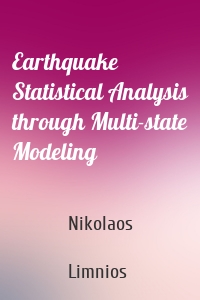Nikolaos Limnios
4 кн.
Earthquake Statistical Analysis thr...
Earthquake occurrence modeling is a rapidly developing research area. This book deals with its critical issues, ranging from theoretical advances to practical applications. The introductory chapter outlines state-of-the-art earthquake modeling approaches based on stochastic models. Chapter 2 presents seismogenesis in association with the evolving stress field. Chapters 3 to 5 present earthquake occurrence modeling by means of hidden (semi-)Markov models and discuss associated characteristic...
| Автор | Nikolaos Limnios |
Mathematical Methods in Survival An...
Reliability and survival analysis are important applications of stochastic mathematics (probability, statistics and stochastic processes) that are usually covered separately in spite of the similarity of the involved mathematical theory. This title aims to redress this situation: it includes 21 chapters divided into four parts: Survival analysis, Reliability, Quality of life, and Related topics. Many of these chapters were presented at the European Seminar on Mathematical Methods for Survival...
| Автор | Nikolaos Limnios |
Introduction to Stochastic Models
This book provides a pedagogical examination of the way in which stochastic models are encountered in applied sciences and techniques such as physics, engineering, biology and genetics, economics and social sciences. It covers Markov and semi-Markov models, as well as their particular cases: Poisson, renewal processes, branching processes, Ehrenfest models, genetic models, optimal stopping, reliability, reservoir theory, storage models, and queuing systems. Given this comprehensive treatment of...
| Автор | Nikolaos Limnios |
Fault Trees
Fault tree analysis is an important technique in determining the safety and dependability of complex systems. Fault trees are used as a major tool in the study of system safety as well as in reliability and availability studies. The basic methods – construction, logical analysis, probability evaluation and influence study – are described in this book. The following extensions of fault trees, non-coherent fault trees, fault trees with delay and multi-performance fault trees, are also explained....
| Автор | Nikolaos Limnios |





